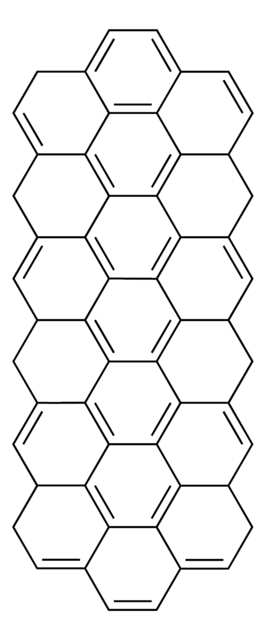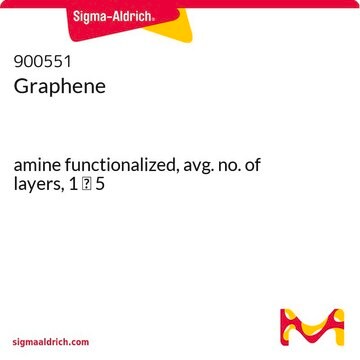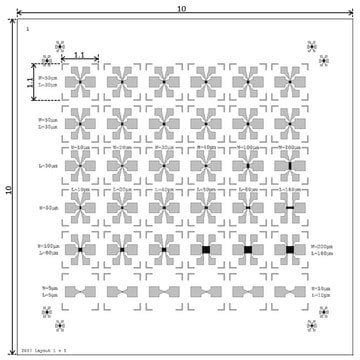922714
Graphene nanoribbon
Sinônimo(s):
GNRs, Graphene nanoribbon made by reductive splitting of CNT, Graphene nanoribbons by reductive splitting of CNT, H terminated graphene nanoribbons
About This Item
Produtos recomendados
descrição
Made by reductive splitting of CNT, edge terminated with H.
Nível de qualidade
Ensaio
≥90% carbon basis (EA)
Largura
0.25-0.35 μm ± 0.05-0.1 μm
Procurando produtos similares? Visita Guia de comparação de produtos
Descrição geral
Aplicação
Palavra indicadora
Warning
Frases de perigo
Declarações de precaução
Classificações de perigo
Eye Irrit. 2 - STOT SE 3
Órgãos-alvo
Respiratory system
Código de classe de armazenamento
11 - Combustible Solids
Classe de risco de água (WGK)
WGK 3
Ponto de fulgor (°F)
Not applicable
Ponto de fulgor (°C)
Not applicable
Certificados de análise (COA)
Busque Certificados de análise (COA) digitando o Número do Lote do produto. Os números de lote e remessa podem ser encontrados no rótulo de um produto após a palavra “Lot” ou “Batch”.
Já possui este produto?
Encontre a documentação dos produtos que você adquiriu recentemente na biblioteca de documentos.
Nossa equipe de cientistas tem experiência em todas as áreas de pesquisa, incluindo Life Sciences, ciência de materiais, síntese química, cromatografia, química analítica e muitas outras.
Entre em contato com a assistência técnica








